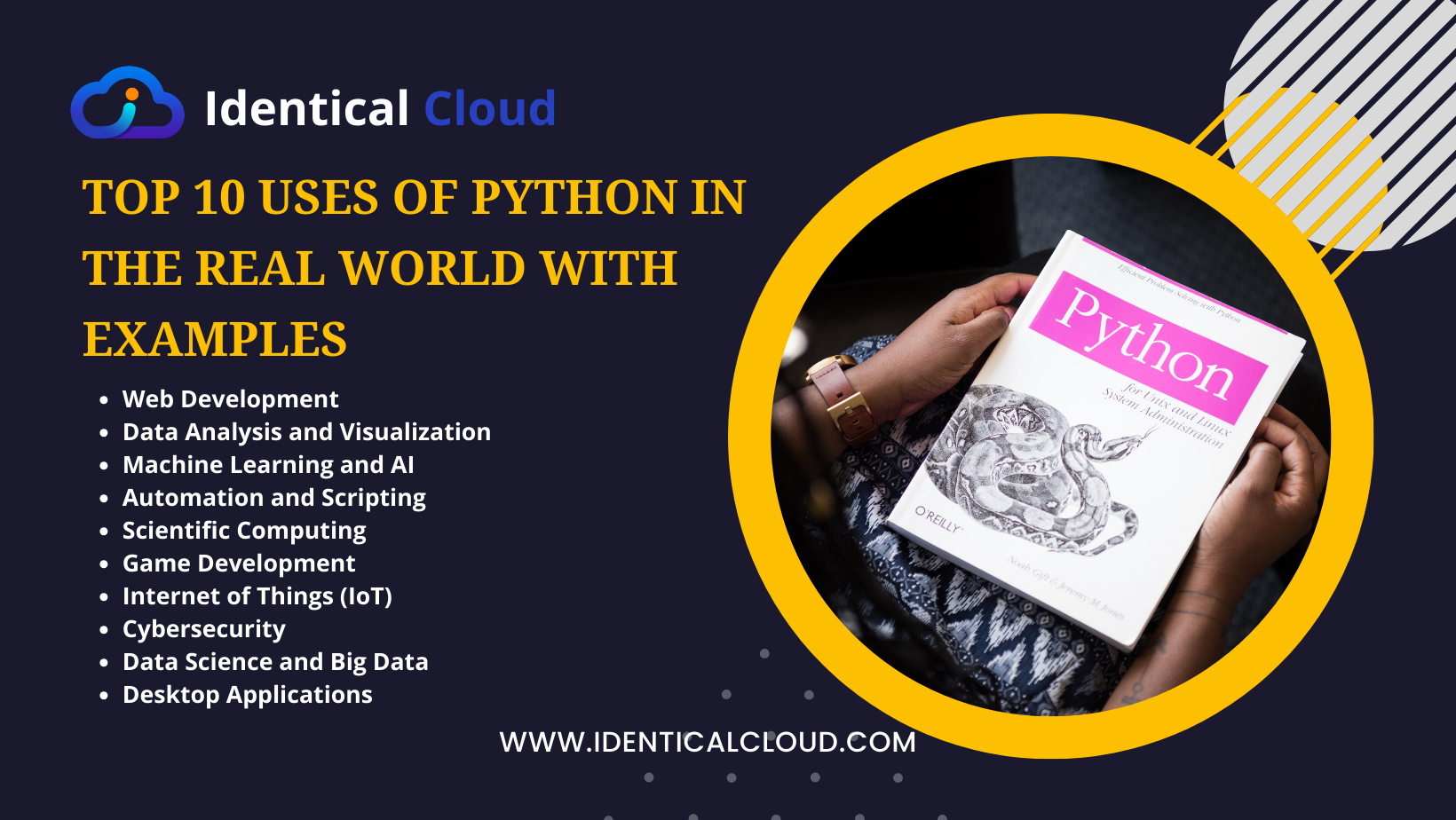
Top 10 Uses of Python in the Real World with examples
Top 10 Uses of Python in the Real World with examples
Python, renowned for its simplicity and versatility, has evolved into one of the most popular programming languages in the world. Its ease of use and rich ecosystem of libraries make it a go-to choice for a wide range of applications in the real world.
Python is a general-purpose programming language that is used in a wide range of real-world applications. It is known for its simplicity, readability, and versatility. Python is also a very popular language for machine learning and artificial intelligence applications.
In this blog, we’ll explore the top 10 uses of Python in various domains, along with illustrative examples.
1. Web Development:
- Example: Django and Flask
- Python’s web frameworks, like Django and Flask, simplify web application development. Django’s batteries-included approach and Flask’s minimalism cater to different project needs. These frameworks allow developers to create secure, scalable, and feature-rich web applications.
2. Data Analysis and Visualization:
- Example: Pandas, NumPy, and Matplotlib
- Python’s data analysis libraries, such as Pandas, NumPy, and Matplotlib, are invaluable for data professionals. Pandas provides data structures and functions for data manipulation and analysis. NumPy offers support for numerical operations, and Matplotlib is a versatile library for creating data visualizations like graphs and charts.
3. Machine Learning and AI:
- Example: TensorFlow, PyTorch, and scikit-learn
- Python dominates the machine learning and artificial intelligence landscape. TensorFlow and PyTorch enable the creation of complex AI models, while scikit-learn simplifies machine learning tasks such as classification and regression.
4. Automation and Scripting:
- Example: Automating file management, data extraction, or system tasks with Python scripts
- Python’s scripting capabilities automate repetitive tasks, enhancing productivity and reducing errors. For example, you can write Python scripts to automate file downloads, data scraping, or backup processes.
5. Scientific Computing:
- Example: Scientific simulations and computational modeling
- Python, paired with libraries like SciPy and SymPy, excels in scientific computing. Scientists and engineers use Python for simulations, data analysis, and solving complex mathematical problems.
6. Game Development:
- Example: Pygame
- Python is used to develop 2D games, with Pygame offering a versatile framework for game creators. Pygame simplifies game development by handling tasks like rendering, collision detection, and user input.
7. Internet of Things (IoT):
- Example: Controlling and monitoring IoT devices using Python scripts
- Python’s simplicity makes it suitable for programming IoT devices. Using libraries like MicroPython and CircuitPython, developers can control and monitor IoT devices, making them smarter and more connected.
8. Cybersecurity:
- Example: Penetration testing, network security analysis, and developing security tools
- Python is favored by cybersecurity professionals for its ability to automate tasks and build security solutions. For instance, Python scripts can be used for network penetration testing, vulnerability scanning, and log analysis.
9. Data Science and Big Data:
- Example: Analyzing large datasets, implementing data pipelines, and running data processing tasks
- Python, bolstered by libraries like Apache Spark and Dask, plays a pivotal role in data science and big data applications. These libraries enable distributed data processing and analysis on massive datasets.
10. Desktop Applications:
– Example: Creating cross-platform desktop apps using libraries like PyQt or Tkinter
– Python’s GUI libraries like PyQt and Tkinter facilitate the development of cross-platform desktop applications. Examples include text editors, image viewers, and project management tools.
These real-world applications demonstrate the incredible versatility of Python. Whether you’re a web developer, data scientist, AI engineer, or enthusiast in any field, Python’s user-friendly syntax and extensive libraries offer a powerful toolkit to bring your ideas to fruition. As Python continues to evolve and gain popularity, its impact on diverse industries and domains is only expected to grow.
These are just a few examples of the many ways that Python is used in the real world. Python is a powerful and versatile language that can be used to solve a wide range of problems









